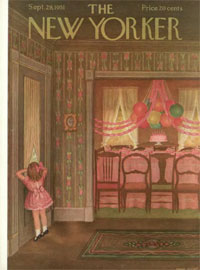Today his name came up because of a long form post at Quartz: "High-end art is one of the most manipulated markets in the world" that I'll link to again as tomorrow's weekend read.
Joe Duveen went from being one of thirteen children of a successful Jewish-Dutch importer to being 1st (and last) Baron Duveen, all because of a simple observation:
"Europe has a great deal of art, and America has a great deal of money."On that "Great deal of money", his buy-side clients included J.P. Morgan, Henry Clay Frick, William Randolph Hearst, Henry Huntington, Jules Bache , Andrew Mellon and John D. Rockefeller.
On the sell-side various European Aristos e.g. the seller of the painting below, the landlord known as the Duke of Westminster.
There have been two biographies of Duveen, the first by Behrman is better written but contained errors while the later one by Meryle Secrest is more accurate in the details, partly because she had access to the Getty Museum's hundreds of linear feet of business records and ephemera:
Duveen Brothers Resources
We have been planning to serialize Behrman's six New Yorker articles on Duveen, here's a taste of the first one, from 1951:
The New Yorker
September 29, 1951: 33-61When Joseph Duveen, the most spectacular art dealer of all time, travelled from one to another of his three galleries, in Paris, New York, and London, his business, including a certain amount of his stock in trade, travelled with him. His business was highly personal, and during his absence his establishments dozed. They jumped to attention only upon the kinetic arrival of the Master. Early in life, Duveen—who became Lord Duveen of Millbank before he died in 1939, at the age of sixty-nine—noticed that Europe had plenty of art and America had plenty of money, and his entire astonishing career was the product of that simple observation. Beginning in 1886, when he was seventeen, he was perpetually journeying between Europe, where he stocked up, and America, where he sold. In later years, his annual itinerary was relatively fixed: At the end of May, he would leave New York for London, where he spent June and July; then he would go to Paris for a week or two; from there he would go to Vittel, a health resort in the Vosges Mountains, where he took a three-week cure; from Vittel he would return to Paris for another fortnight; after that, he would go back to London; sometime in September, he would set sail for New York, where he stayed through the winter and early spring.Occasionally, Duveen departed from his routine to help out a valuable customer. If, say, he was in Paris and Andrew Mellon or Jules Bache was coming there, he would considerately remain a bit longer than usual, to assist Mellon or Bache with his education in art. Although, according to some authorities, especially those in his native England, Duveen's knowledge of art was conspicuously exceeded by his enthusiasm for it, he was regarded by most of his wealthy American clients as little less than omniscient. "To the Caliph I may be dirt, but to dirt I am the Caliph!" says Hajj the beggar in Edward Knoblock's "Kismet." Hajj's estimate of his social position approximated Duveen's standing as a scholar. To his major pupils, Duveen extended extracurricular courtesies. He permitted Bache to store supplies of his favorite cigars in the vaults of the Duveen establishments in London and Paris. One day, as Bache was leaving his hotel in Paris for his boat train, he realized that he didn't have enough cigars to last him for the Atlantic crossing. He made a quick detour to Duveen's to replenish. Duveen was not in Paris, and Bache was greeted by Bertram Boggis, then Duveen's chief assistant and today one of the heads of the firm of Duveen Brothers. While Bache was waiting for the cigars to appear, Boggis showed him a Van Dyck and told him Duveen had earmarked it for him. Bache was so entranced with the picture that he bought it on the spot and almost forgot about the cigars; he finally went off to the train with both. There was no charge for storing the cigars, but the Van Dyck cost him two hundred and seventy-five thousand dollars.Probably never before had a merchant brought to such exquisite perfection the large-minded art of casting bread upon the waters. There was almost nothing Duveen wouldn't do for his important clients. Immensely rich Americans, shy and suspicious of casual contacts because of their wealth, often didn't know where to go or what to do with themselves when they were abroad. Duveen provided entrée to the great country homes of the nobility; the coincidence that their noble owners often had ancestral portraits to sell did not deter Duveen. He also wangled hotel accommodations and passage on sold-out ships. He got his clients houses, or he provided architects to build them houses, and then saw to it that the architects planned the interiors with wall space that demanded plenty of pictures. He even selected brides or bridegrooms for some of his clients, and presided over the weddings with avuncular benevolence. These selections had to meet the same refined standard that governed his choice of houses for his clients—a potential receptivity to expensive art....MUCH MORE
We'll have the second of the six articles next week, in the meantime here's one of the pictures that passed through Duveen's hands, Gainsborough's Blue Boy:

